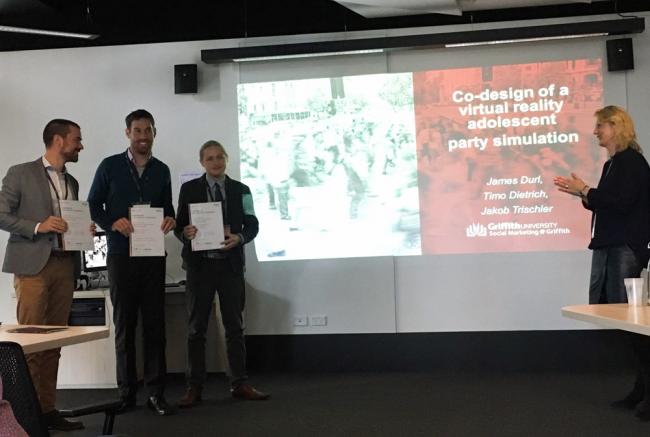Co-designing a virtual reality adolescent house party simulation experience
2017-12-18Dr. Jakob Trischler, Postdoctoral researcher at CTF, currently collaborates with a team of social marketing researchers at Griffith Business School, Australia, to address a key challenge that many public sector organizations are facing: How to identify, recruit, and actively involve vulnerable users as ‘co-designers’ during the early stages of the service design process? The research team posed this question recently when designing new alcohol education program resources for high school students in Australia.
– Alcohol and drug education programs are typically entirely expert-driven in their content creation. One reason for this is the difficulty of recruiting users representing the target audience. For example, teenagers may not perceive themselves as suitable participants or might even be reluctant to participate in a co-design session. Let’s face it, who likes to talk about alcohol consumption and develop ideas for education programs that address these issues? Isn’t it much more exciting to innovate ideas for the next computer game, Lego set, or T-shirt design? While this may be true, our research finds that teenagers can contribute unique knowledge and insights about their usage and needs. Their insights informed the development of an innovative social marketing program, www.blurredminds.com.au, which aims to gamify alcohol education, says Jakob Trischler.
At the 2017 ANZMAC conference in Melbourne Jakob Trischler, James Durl and Timo Dietrich presented a paper which reports on the application of co-design to the design of a virtual reality adolescent house party simulation experience. The use of virtual reality increases user immersion and engagement with the education program, and through its interactive content, allows students to become more resilient to peer-pressure scenarios.
The paper, which received the best paper award for the conference track Innovation & Design, provides practical guidance on how teenagers can be involved as co-designers, where they as part of a team, contribute directly as ‘experts of their experiences’ to the design of new service ideas. While there might be challenges related to actively involving users who are typically not part of a design process, it should be noted that they nonetheless can make important contributions if they are empowered to do so.
For more information
If you are interested to learn more about co-design as an approach to leverage service innovation, please contact Jakob Trischler, jakob.trischler@kau.se, +46 54 700 1875.
Here you can access one of the team's recent journal publications Co-designing with young consumers – reflections, challenges and benefits.



